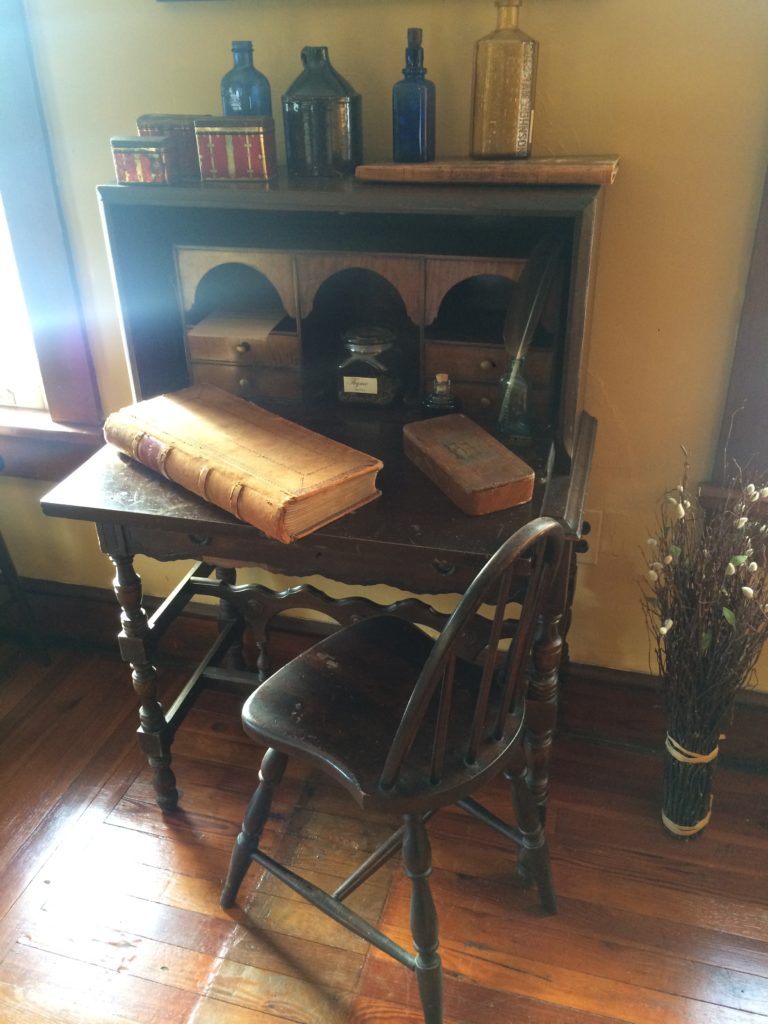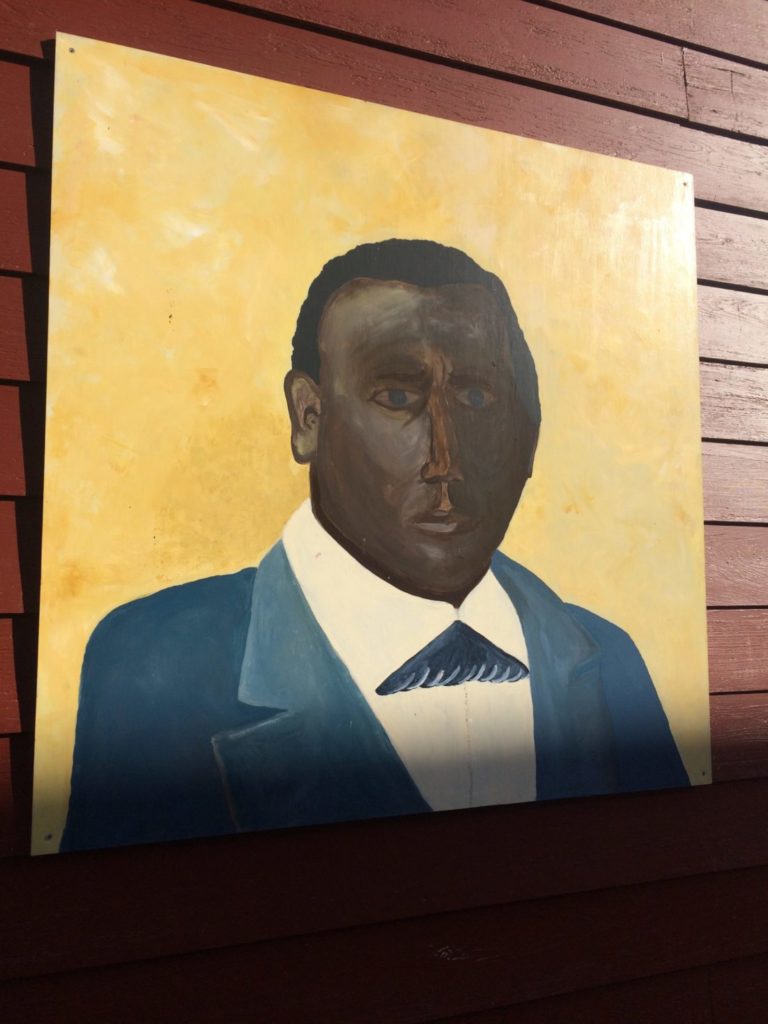 The New Jersey Pinelands were the source of Dr. James Still’s inspiration, where his ingenuity led him to flourish as a homeopathic physician. Known in South Jersey and the Philadelphia area as the “Black Doctor of the Pinelands,” Dr. Still, 1812-1882, became an admired healer and one of the wealthiest men in South Jersey at a time when a formal medical education was not available to him. Early Recollections and Life of James Still, his 1877 autobiography, written during evenings after he treated patients, is still in print.
The New Jersey Pinelands were the source of Dr. James Still’s inspiration, where his ingenuity led him to flourish as a homeopathic physician. Known in South Jersey and the Philadelphia area as the “Black Doctor of the Pinelands,” Dr. Still, 1812-1882, became an admired healer and one of the wealthiest men in South Jersey at a time when a formal medical education was not available to him. Early Recollections and Life of James Still, his 1877 autobiography, written during evenings after he treated patients, is still in print.
“Inspiring” is often overused, but his autobiography is, in the form of hard-won wisdom shared with the utmost generosity. As a deeply religious man, Dr. Still knew the Bible well. Though he wrote with modesty about his lack of formal education, his writing has a biblical eloquence: “I can only account for success by endeavoring always to be honest in all things, – in medical treatment and in business operations, – and in a reliance upon that Divine Being who cares for the sparrow in its flight, and who uses the weak things of the world to confound the mighty. These principles I have endeavored to instil in the minds of my sons.”
As a child, Dr. Still felt a calling to medicine, “From that day on I did not want any knowledge save that of the healing art” and dedicated himself to it with a remarkable self-discipline, “…I would commit my life to Nature’s God, hoping all things that ended well would be well. I formed a habit of doing anything at the time appointed for it to be done. If I promised to do a thing, I did it. If I had to go anywhere, I was always on time. There was nothing like present time to me, and if I commenced to do a thing, I would finish it.”
Having recognized his calling in youth, Dr. Still learned from nature and sought out other opportunities in Indian Mills, now part of Shamong Township, when formal education was not available. He observed Native Americans’ use of medicinal herbs and apprenticed with a Caucasian doctor. Dr. Still’s fortune came from selling his homeopathic remedies, which he invested in farmland and rental properties in Medford, New Jersey and the surrounding Pinelands area. He was generous in lending money to help others get their start in life.
 Conscious of being a role model, at times in his autobiography, Dr. Still directly addresses readers: “Rise in the morning with a cheerful spirit, and try to retain it during the day” and “Merit alone will promote you to respect.” More specifically, he encouraged, “…I would like to be an example to my sons, and all other poor young men who shall be so unfortunate as I was to have to commence the battle of life without education or pecuniary means.” Dr. Still’s son James, Jr., became the second African-American man to graduate from Harvard Medical School, doing so with honors.
Conscious of being a role model, at times in his autobiography, Dr. Still directly addresses readers: “Rise in the morning with a cheerful spirit, and try to retain it during the day” and “Merit alone will promote you to respect.” More specifically, he encouraged, “…I would like to be an example to my sons, and all other poor young men who shall be so unfortunate as I was to have to commence the battle of life without education or pecuniary means.” Dr. Still’s son James, Jr., became the second African-American man to graduate from Harvard Medical School, doing so with honors.
In his accomplished family, James was brother to William, a Philadelphia abolitionist and author of The Underground Railroad, 1872, unprecedented as the narratives were from the point-of-view of escaped slaves. Recording the narratives provided not only records, but the means for family members, some traveling under assumed names as fugitives, to find each other. In helping others, William Still discovered their lost brother Peter, for whom he had searched for years. William had shared in this longing with their mother after she had to leave Peter and another brother behind when she escaped from slavery. Of his brothers’ reunion, James wrote: “He served in slavery forty-five years, and by saving and industry was enabled to buy his freedom from his master whilst living in Alabama…. He came to Philadelphia…and found his own brother clerk in the Anti-Slavery office there, and from him learned the whereabouts of his mother and brothers.”
As for Dr. Still’s own path, saving lives and alleviating the suffering of his patients, he shared, “To me it has been a source of much pleasure to know that I have been a benefactor to mankind.”
The woods pictured are behind Dr. Still’s former Medford home, considered a mansion despite his modest description. The Still family, working with the Medford Historical Society members, were instrumental in saving Dr. Still’s office. All volunteer regularly to support its restoration through the Dr. Still Historic Office Site and Center for Education. Updates on his family’s devotion to Dr. Still’s legacy through historic and literary projects are led by his great-great-grandnephew, who preserves the Still family history, as noted in South Jersey News.
For more information on visiting, scheduling a group tour, or supporting the restoration of Dr. Still’s medical office and education center by volunteering or donating, please visit Dr. Still Historic Office Site and Education Center and the Medford Historical Society. Donations may also be mailed to:
Dr. Still Education Center
PO Box 362
Medford, NJ 08055
If you are visiting Medford, there are many wonderful historical sites in addition to the elegant charm from its galleries, shops, and restaurants. At its heart you will also find a park, lively with children playing, newly dedicated to Dr. Still.
 Quotes from Dr. Still’s “Early Recollections and Life of Dr. James Still”. Adapted text from “The Moral Quandary of Heels. All Rights Reserved © 2013 Kathleen Helen Levey. Published on “Writing New Jersey Life” on 6/21/17
Quotes from Dr. Still’s “Early Recollections and Life of Dr. James Still”. Adapted text from “The Moral Quandary of Heels. All Rights Reserved © 2013 Kathleen Helen Levey. Published on “Writing New Jersey Life” on 6/21/17

Comments are closed.